Ornamental, versatile, edible, and highly nutritious — blueberries tick all the must-have boxes for a top landscape plant. With their pink-white spring flowers, blue berries through the summer, and red or yellow fall color, they make a three-season splash in the garden. They can blend into a standard vegetable garden with no problem, but they also make excellent ornamental shrubs or, planted closely, an edible hedge. Some grow low enough to work as a ground cover.
Though versatile, blueberries are a bit picky. They need acidic soil and may take more care than many other edibles. They’re also known for not being an ideal plant for warm-winter climates, to the dismay of many blueberry lovers.The latter, though, is becoming less of an issue as new varieties are constantly being developed.
Highbush blueberries are the giants of the family, reaching up to 7 to 12 feet tall. These are the traditional blueberries you’ll find in grocery stores. Northern highbush blueberries are cold lovers; southern highbush blueberries are hybrids that are low-chill and shorter; they do well in warmer climates. The very cold-hardy lowbush blueberries are much shorter, as their name implies, generally only up to 2 feet tall with dwarf varieties that can be even shorter. Half-high blueberry hybrids split the difference, usually growing between 2 to 4 feet high.
Rabbiteye blueberries as also short; a native of the American Southeast, they’re a good choice for the western and southern U.S. as they don’t mind warmer temperatures and often do better in less acidic soil. If alkaline soil is a problem in your area, you can grow blueberries in containers as well.
Plan to plant at least two varieties. Rabbiteyes require cross-pollination, and the others benefit from it.
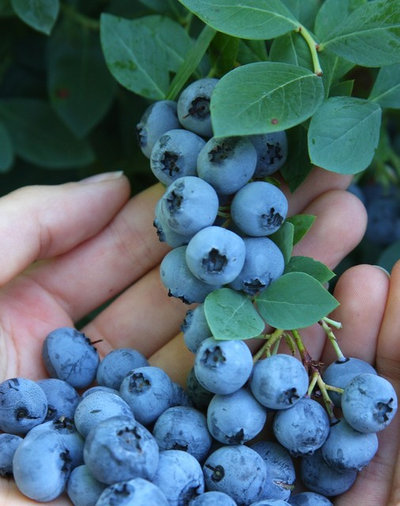
Monrovia
When to plant: Early spring in cold-winter climates; fall or winter in mild-winter climates
Light requirement: Full sun
Water requirement: Regular
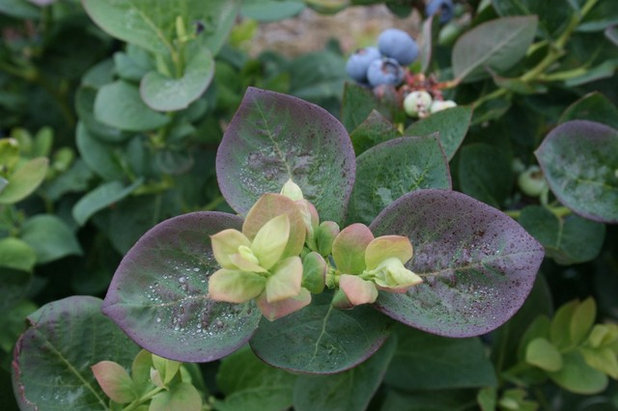
Monrovia
Favorites:
Northern highbush Berkeley, Bluecrop, Blueray, Duke, Earliblue, Elliott, Jersey, Legacy, Patriot, Rubel;
Southern highbush Jubilee, Misty, O’Neal, Reveille, Sharpblue, Sunshine Blue;
Half-high Chippewa, Northcountry, Northsky, Polaris;
Lowbush Brunswick, Burgundy, Top Hat;
Rabbiteye Beckyblue, Bonitablue, Briteblue, Climax, Delite, Premier, Powederblue, Southland, Tifblue
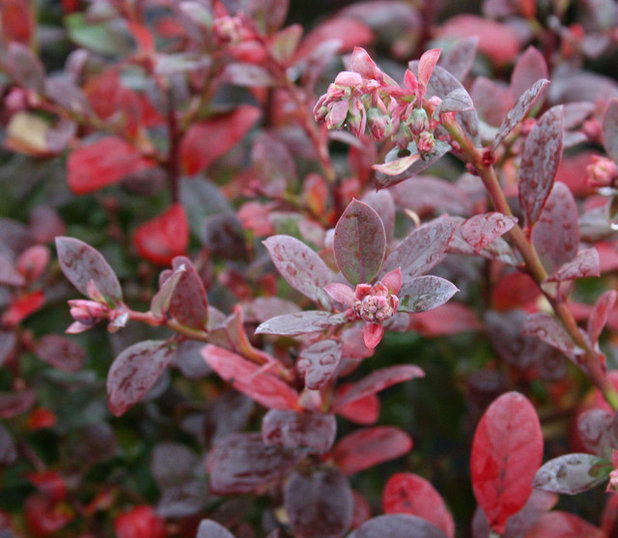
Monrovia
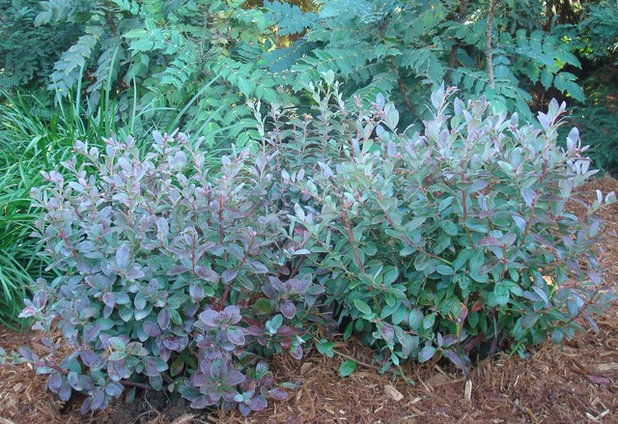
Monrovia
Planting and care: Set out 2- to 3-year-old plants about 4 to 6 feet apart in shallow and wide planting holes, allowing plenty of space for the more enthusiastic growers, and with the crown ½ inch below the soil surface.Create a wide rather than deep hole. Cover the roots completely, Mulch after planting; the shallow roots need to retain moisture.
If you’re growing in containers, choose one that is at least 18 inches wide; a 20-inch pot or half-wine barrel would be even better. Use an acidic potting soil and plant as you would in the ground.
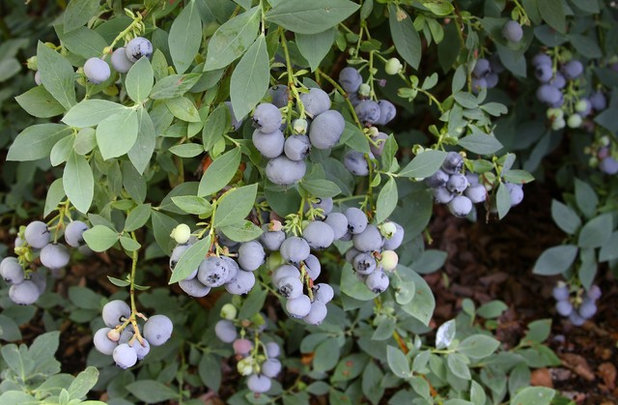
Monrovia
Provide 1 to 2 inches of water per week during the growing season, keeping the soil moist but not soggy. Using soaker hoses or watering furrows or basins is best; overhead watering can lead to mildew and mold problems.
Unlike most edibles, feeding isn’t recommended, at least at first. Forgo any fertilizer the first year and use it lightly in early spring after that if needed. Choose a fertilizer that works for azaleas and rhododendrons.
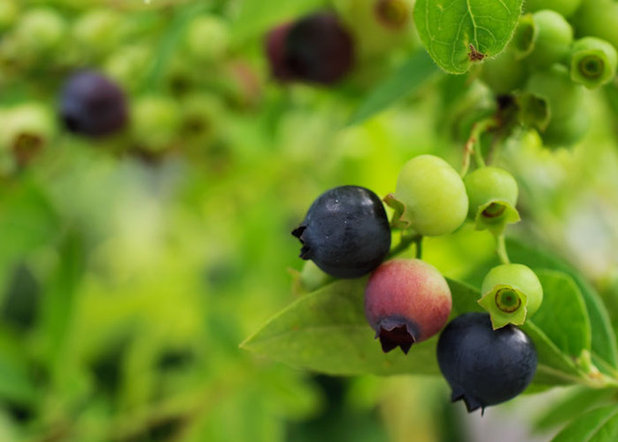
Barbara Pintozzi
You may want as many blueberries as possible, but judicious pruning and thinning will help your plants produce larger berries and grow to their full potential. Strip off any fruit the first year (be patient, blueberries are reasonably long-lived). The next spring, only remove low, drooping or crossing canes. The third spring, cut back the branches to 6 to 8 buds and remove any stems that are growing too long. By year 5, begin removing any old canes every spring to encourage new and more productive growth.
Every few years, prune lowbush blueberries back to the ground.
Mildew and botrytis or gray mold occasionally may appear, but your main problem will be birds decimating your crop. Cover the bushes with netting as the berries appear so you’ll have some for yourself.
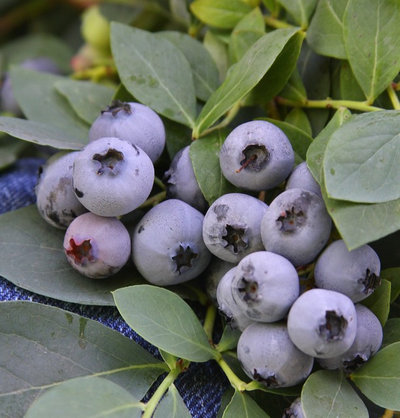
Monrovia
Harvest: Berries should be fully colored and sweet-tasting. Be patient; it will take several years before you get a good crop, but the plants are long-lived so you’ll still have years of fruit.





